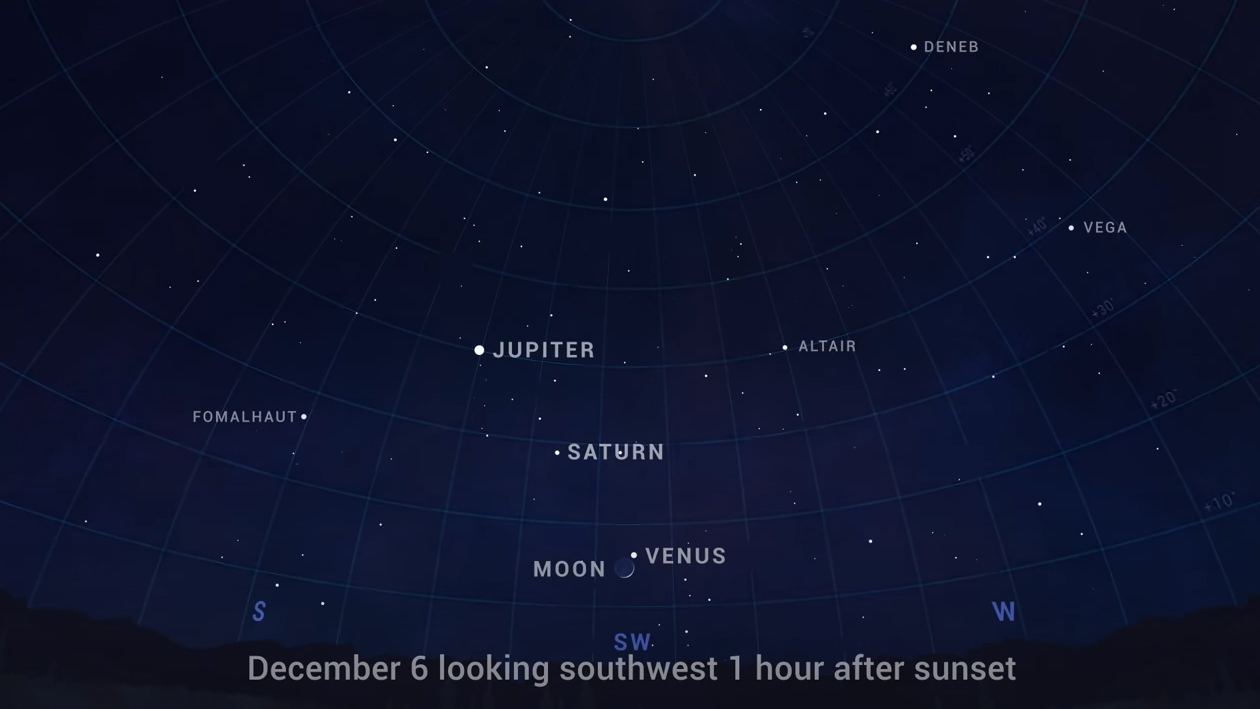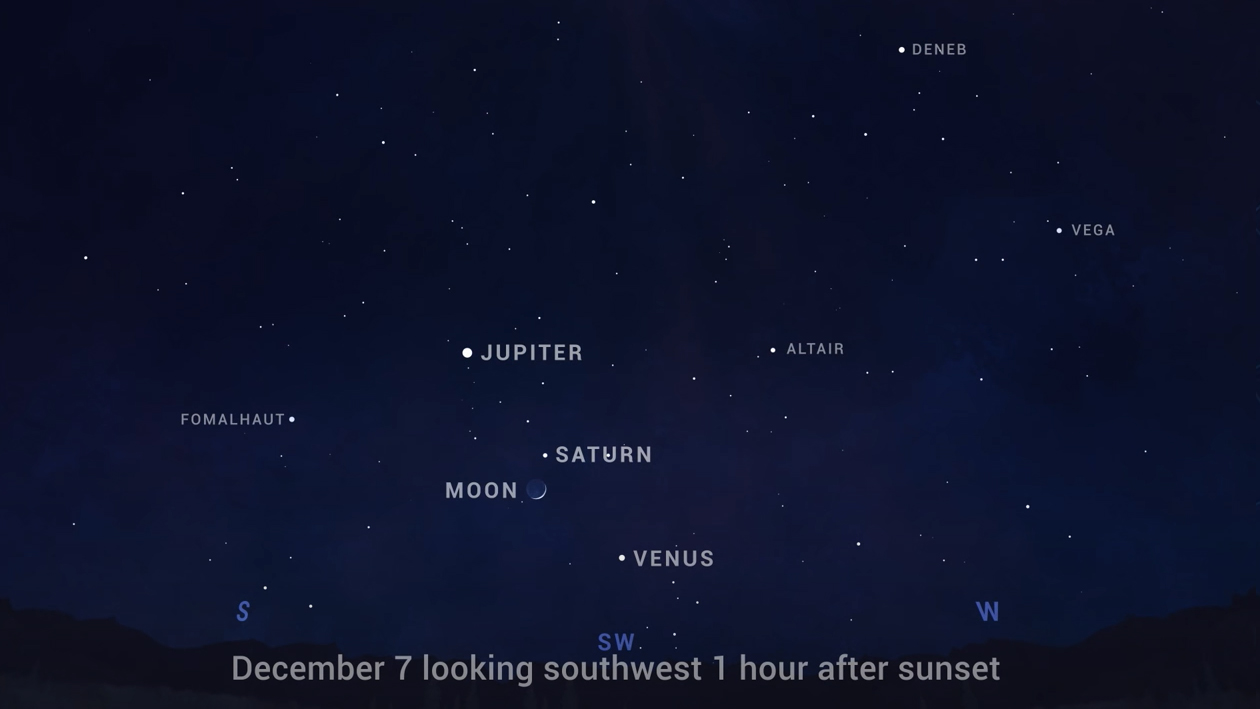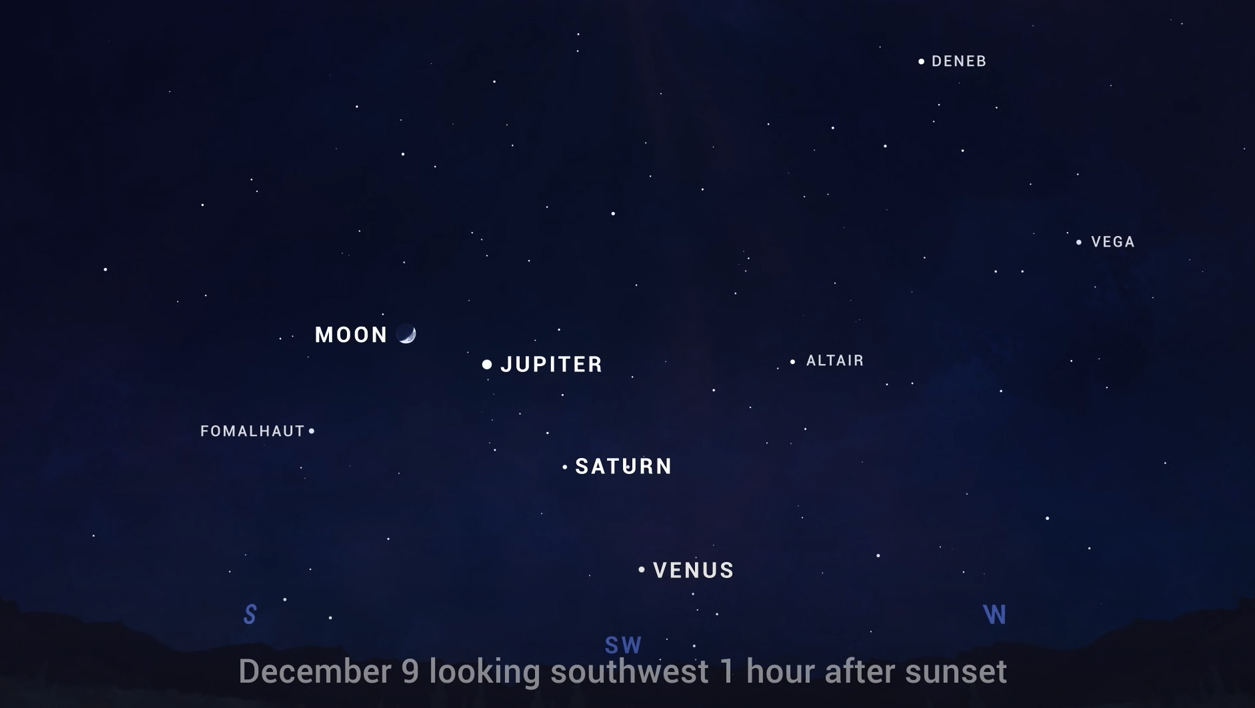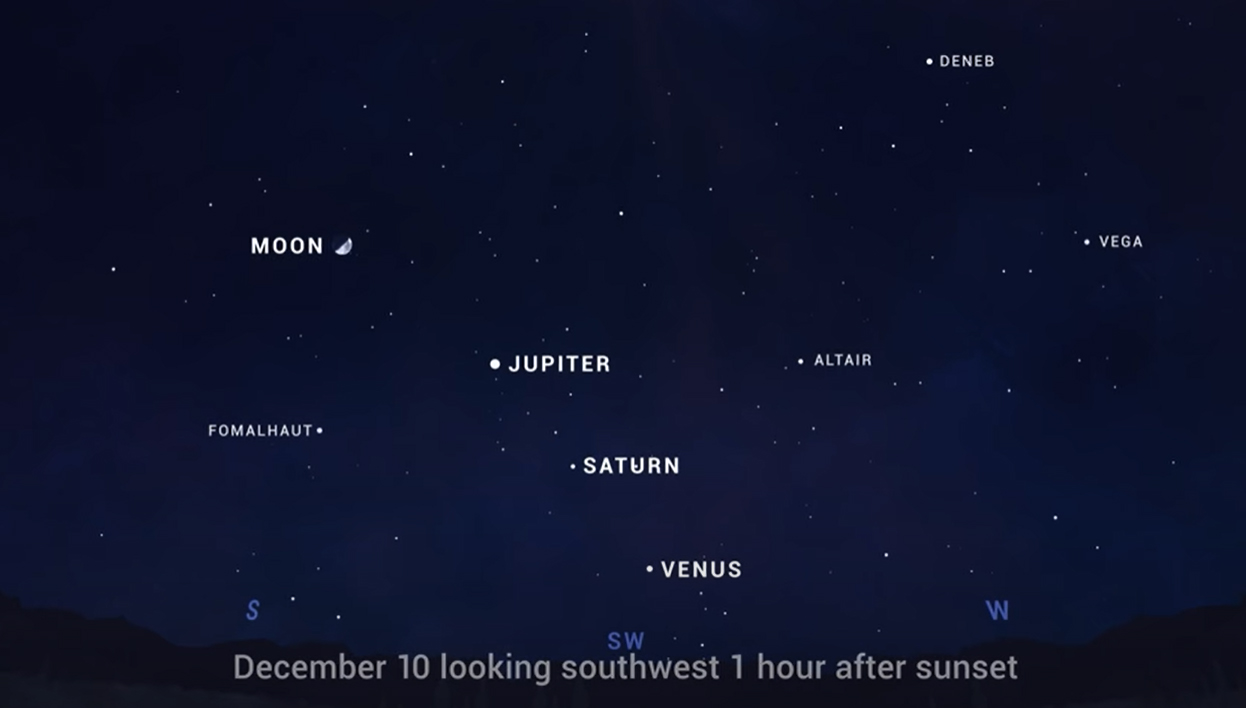Watch the moon shine near Venus tonight on its way toward Saturn and Jupiter
Look up for a spectacular sky show this week!
Venus and the moon make a dazzling duo in the night sky tonight (Dec. 6), starting the moon's multi-day journey past a slew of planets.
Venus, playfully known by many as the "evening star," is the brightest object in the night sky (barring the moon) right now, and it will be at its most brilliant tonight as it makes its way toward the sun (from our perspective looking at the sky), which it will pass closely by this January. If you look to the western sky after sunset tonight, you'll be able to see the bright planet just above the moon.
The fun will continue in the night sky through the week as, through Dec. 10, you'll be able to watch the waxing crescent moon pass by Venus and then Saturn and Jupiter as it rises slowly in the night sky, according to NASA. In addition to the moon's planetary journey, you'll also be able to see the planets themselves, lined up neatly in the night sky.
Check out the sky maps below to see how the crescent moon will make its planetary journey upward in the night sky over the next few days.
Related: Best night sky events of December 2021 (stargazing maps)





If you take a photograph of Venus and the moon let us know! You can send images and comments in to spacephotos@space.com.
Venus will continue to sparkle in the evening sky this week, but the spectacle will be short-lived as the planet sinks closer and closer to the horizon while the moon journeys upward. Venus won't be in the evening sky again until December of next year!
But don't fear, Venus fans (and early risers rejoice!) — the planet's dip from view will be short-lived. This Houdini act is caused by the planet moving between Earth and the sun. In late January, the planet will reappear in the early pre-dawn sky, where it will stay for quite some time.
Get the Space.com Newsletter
Breaking space news, the latest updates on rocket launches, skywatching events and more!
For skywatchers with an affinity for the moon, according to earthsky.org, our rocky satellite will be especially interesting to observe as well, especially for those with telescopes to get an up-close view.
"The moon itself, softly glowing with earthshine, will be showing mysterious markings on its night side," Earthsky.org reported.
Venus and the moon will be bright and visible without the need for skywatching tools this week. However, if you're looking for binoculars or a telescope to get a better or closer view of objects like Venus in the night sky, check out our guides for the best binoculars and the best telescopes of the year.
If you're an astrophotographer and you need equipment, consider our guides for the best cameras for astrophotography and best lenses for astrophotography to prepare for your next skywatching outing.
Email Chelsea Gohd at cgohd@space.com or follow her on Twitter @chelsea_gohd. Follow us on Twitter @Spacedotcom and on Facebook.
Join our Space Forums to keep talking space on the latest missions, night sky and more! And if you have a news tip, correction or comment, let us know at: community@space.com.

Chelsea “Foxanne” Gohd joined Space.com in 2018 and is now a Senior Writer, writing about everything from climate change to planetary science and human spaceflight in both articles and on-camera in videos. With a degree in Public Health and biological sciences, Chelsea has written and worked for institutions including the American Museum of Natural History, Scientific American, Discover Magazine Blog, Astronomy Magazine and Live Science. When not writing, editing or filming something space-y, Chelsea "Foxanne" Gohd is writing music and performing as Foxanne, even launching a song to space in 2021 with Inspiration4. You can follow her on Twitter @chelsea_gohd and @foxannemusic.









